Main navigation
Search Results
-
Funding Funding programme, Funded by: European Commission, sb_search.searchresult.label.programSubmissionDate: 18/09/2024https://www.biooekonomie-bw.de/en/databases/funding/eic-transition-1 -
ProGrün project - 30/12/2023 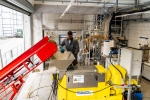
Using proteins extracted from grassland cuttings to produce animal feed and exploit by-product streams
Animal feed often contains protein from soy and importing it causes major environmental harm. In the ProGrün project, researchers at the University of Hohenheim, including a work group led by Prof. Dr. Andrea Kruse, are developing a scalable technological process to extract proteins from grassland cuttings and use them to make sustainable animal feed produced in the region where it will be used.
https://www.biooekonomie-bw.de/en/articles/news/using-proteins-extracted-grassland-cuttings-produce-animal-feed-and-exploit-product-streams -
Alternative construction materials: mycelium-based materials - 20/12/2023 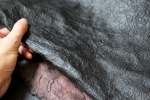
Using fungi to create sustainable and economical mycelium-based materials
Most of us see fungi as just food - and possibly pathogens. This is a mistake, because these amazing organisms are capable of much more: they grow on plant residues of all kinds, forming a dense and interconnected structure as they spread. The resulting material can be moulded into desired shapes and be turned into new sustainable and economically attractive products such as leather and polystyrene substitutes or building materials.
https://www.biooekonomie-bw.de/en/articles/news/using-fungi-create-sustainable-and-economical-mycelium-based-materials -
Facade greening with precipitation retention - 19/12/2023 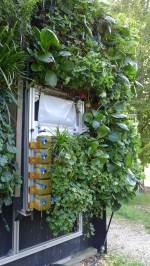
Rain-retaining living walls improve the urban climate and protect against flooding
Due to dense urbanisation and associated soil sealing, heat and heavy rainfall are becoming an increasing problem for people living in cities. Researchers at the German Institutes of Textile and Fibre Research (DITF) in Denkendorf have developed innovative living walls that not only help cool the environment, but also provide flood protection thanks to their water retention properties.
https://www.biooekonomie-bw.de/en/articles/news/rain-retaining-living-walls-improve-urban-climate-and-protect-against-flooding -
Sustainable binder alternative - 18/12/2023 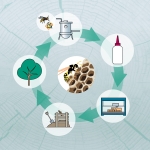
Copied from insects: new biological wood binder under development
Plastic is all around us; and unfortunately, it is not going away any time soon. The search for more sustainable solutions is fully underway. However, binders that degrade only with difficulty or not at all are still used to bond natural materials such as wood and straw - not yet truly environmentally friendly. Fraunhofer researchers are working on an insect-inspired wood binder that makes bonded wood products both resistant and biodegradable.
https://www.biooekonomie-bw.de/en/articles/news/copied-insects-new-biological-wood-binder-under-development -
urban BioEconomyLab - 07/12/2023 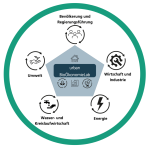
The city as a living laboratory for a bioeconomic, sustainable economic area
Baden-Württemberg is leading the way in the transition to a climate-neutral and sustainable economy. One of the projects undertaken is the Fraunhofer IGB’s "urban BioEconomyLab" project which aims to develop a transformation model and living laboratory to find bioeconomic solutions for the sustainable design of cities and municipal industry. What is new is that the IGB takes a systemic approach, focusing on biobased and circular value…
https://www.biooekonomie-bw.de/en/articles/news/city-living-laboratory-bioeconomic-sustainable-economic-area -
Recent research shows effectiveness of biosurfactants - 28/11/2023 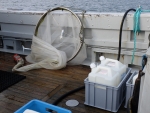
Combating oil spills - biosurfactants can stimulate microbial oil degradation
Oil spills from drilling platforms and tankers cause environmental pollution and a loss of biodiversity. Researchers at the University of Stuttgart, among others, are now using biosurfactants to improve the management of oil spills: their latest research shows that biosurfactants lead to better microbiological degradation of oil components in seawater compared to conventional dispersants.
https://www.biooekonomie-bw.de/en/articles/news/combating-oil-spills-biosurfactants-can-stimulate-microbial-oil-degradation -
The AlbLavendel project - 20/11/2023 
Swabian lavender cultivation: aesthetic and sustainable
Blue-violet, fragrant fields like those in Provence may soon become a common sight in the Swabian Alb. As part of the AlbLavendel project, the University of Hohenheim along with the company naturamus GmbH and the German Institutes of Textile and Fibre Research Denkendorf has started to investigate the cultivation of lavender, the production of essential oils and the use of distillation residues for producing textile fibres in the local region.
https://www.biooekonomie-bw.de/en/articles/news/swabian-lavender-cultivation-aesthetic-and-sustainable -
Event - Sharing Knowledge about: Insect Biorefineries and AI Tools
Online, Informationsveranstaltunghttps://www.biooekonomie-bw.de/en/events/sharing-knowledge-about-insect-biorefineries-and-ai-tools -
Climate-neutral wastewater treatment plants thanks to patented real-time analytics - 08/11/2023 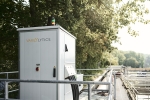
Using AI to reduce greenhouse gases in wastewater companies
The wastewater industry is responsible for global greenhouse gas emissions equivalent to those of global aviation. The start-up Variolytics has found a way to significantly reduce greenhouse gases in wastewater treatment plants using real-time analytics. The patented sensor technology and AI-supported process optimisation offer multiple benefits: in addition to reducing nitrous oxide, the system helps to reduce energy costs and resources.
https://www.biooekonomie-bw.de/en/articles/news/using-ai-reduce-greenhouse-gases-wastewater-companies -
Press release - 02/11/2023 Sustainability Innovation Campus
The Sustainability Innovation Campus (ICN) initiated by the University of Freiburg and the Karlsruhe Institute of Technology (KIT), which will begin its work in January 2024, has announced a two-year funding programme for start-up projects. Scientists from the University of Freiburg, KIT and cooperating universities and research institutions are invited to submit their project outlines by 30 November 2023.
https://www.biooekonomie-bw.de/en/articles/pm/sustainability-innovation-campus -
-
Wasser 3.0: #detect|remove|reuse - 31/10/2023 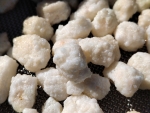
How to sustainably remove and recycle microplastics from water
We all pollute our water with things we use in our everyday lives. In the process, microplastics and micropollutants accumulate in sometimes significant quantities and are difficult to remove. This has increasingly devastating consequences for our health and the environment. Wasser 3.0, a non-profit start-up from Karlsruhe, has declared war on this problem by developing a customisable process to detect, remove and even recycle these pollutants.
https://www.biooekonomie-bw.de/en/articles/news/how-sustainably-remove-and-recycle-microplastics-water -
Press release - 27/10/2023 Lignin coating makes Geotextiles made from environmentally friendly natural fibers durable
Textiles are a given in civil engineering. Until now, textiles made of resistant synthetic fibers have been used for this purpose, having a long lifetime. For some applications, however, it would not only be sufficient but even desirable for the auxiliary textile to degrade when it has done its job. Natural fibers, in contrast, often decompose too quickly. The DITF are developing a bio-based protective coating that extends their service life.
https://www.biooekonomie-bw.de/en/articles/pm/lignin-coating-makes-geotextiles-made-environmentally-friendly-natural-fibers-durable -
Microorganisms degrade biobased turf infill - 17/10/2023 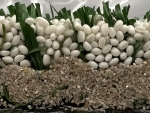
Eco-friendly artificial turf: a sports pitch that’s good for people and the environment
There are thousands of artificial turf pitches in Germany. They are extremely practical, but often not at all environmentally friendly. When it rains or the pitch is used, plastic particles from the rubber granules can be released into the envronment, where they remain. Researchers at the University of Stuttgart along with the company TECNARO are now developing an artificial turf with an infill that biodegrades as soon as it leaves the pitch.
https://www.biooekonomie-bw.de/en/articles/news/eco-friendly-artificial-turf-sports-pitch-s-good-people-and-environment -
Press release - 11/10/2023 Land Use: Producing More Food and Storing More Carbon
Doubling food production, saving water, and increasing carbon storage capacity – this may sound paradoxical, but would be theoretically feasible. Reaching this goal, however, would require a radical spatial reorganization of land use. This is the conclusion of researchers from Karlsruhe Institute of Technology (KIT) and the Heidelberg Institute for Geoinformation Technology (HeiGIT) of Heidelberg University.
https://www.biooekonomie-bw.de/en/articles/pm/landnutzung-mehr-nahrung-produzieren-und-gleichzeitig-mehr-kohlenstoff-speichern -
Press release - 09/10/2023 Microalgae: Environmentally friendly and healthy alternative to fish
Researchers at the University of Hohenheim are working on an alternative to fish consisting of microalgae. Advantage: Microalgae have high quality ingredients and also contribute to carbon storage.
https://www.biooekonomie-bw.de/en/articles/microalgae-environmentally-friendly-and-healthy-alternative-fish -
Preventing waste from instant meals - 05/10/2023 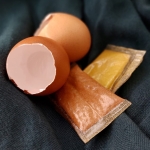
EDGGY: edible packaging film made from eggshell waste
Many instant meals such as ramen soups have both a protective outer packaging and individual ingredients in small plastic sachets. To prevent this environmentally harmful waste, five students at the University of Hohenheim have developed a sustainable film based on eggshells and plant proteins that dissolves in hot water and is edible.
https://www.biooekonomie-bw.de/en/articles/news/edggy-edible-packaging-film-made-eggshell-waste -
Press release - 29/09/2023 Ecological alignment of Artificial Intelligence
The European Parliament’s amendments to the proposal for a Regulation on Artificial Intelligence (AI) may be defined as a socio-ecological turnaround compared to the European Commission’s existing draft. The parliamentary draft proposes a series of environmental and climate-related provisions which, in the Oeko-Institut’s view, are feasible and technically achievable. The Oeko-Institut has reviewed these proposals in a Policy Paper.
https://www.biooekonomie-bw.de/en/articles/pm/ecological-alignment-artificial-intelligence -
Press release - 27/09/2023 Raw material requirements for reducing global poverty calculated for the first time
Researchers at the University of Freiburg quantify the amount of material needed to enable people to live without poverty. 1.2 billion people live in poverty. To lift them out of it, an average of about six tons of raw materials are needed per person and year – in particular minerals, fossil fuels, biomass and metal ores. This is the result of a study by researchers from the Chair of Sustainable Energy and Material Flow Management.
https://www.biooekonomie-bw.de/en/articles/pm/raw-material-requirements-reducing-global-poverty-calculated-first-time -
Press release - 26/09/2023 Local Food Systems: How sustainable are the business models for local food chains?
Mobile units for processing fruit and vegetables on-site may play an important role in food supply in 2035. The EU’s FOX project investigated the form that such local food chains might take. To this end, Fraunhofer ISI developed future scenarios that could be used to test the viability of business models for regional food processing and distribution.
https://www.biooekonomie-bw.de/en/articles/pm/local-food-systems-how-sustainable-are-business-models-local-food-chains -
Press release - 25/09/2023 Autonomous outdoor navigation for machines used in farming, livestock and forestry
Autonomous and robust navigation is an essential capability for agricultural robots or machines that are to reach a new level of autonomy to manoeuver safely and reliably in their environment. Fraunhofer IPA will showcase what is currently technologically and economically feasible with live demos at agritechnica, the agricultural trade fair taking place in Hanover from November 12 to 18, 2023.
https://www.biooekonomie-bw.de/en/articles/pm/autonomous-outdoor-navigation-machines-used-farming-livestock-and-forestry -
Press release - 14/09/2023 The Cultivated B Initiated Pre-Submission Process towards EFSA Certification for Cultivated Sausage
The Cultivated B (TCB) began discussions with the European Food Safety Authority (EFSA) and officially entered the pre-submission process for novel food approval of a novel or non-farmed sausage product. Subsequent to the official submission, TCB will emerge as world’s first biotech company to apply for EFSA certification for cultivated meat. This is a pivotal first step in the evolution of the cultivated meat market.
https://www.biooekonomie-bw.de/en/articles/pm/cultivated-b-initiated-pre-submission-process-towards-efsa-certification-cultivated-sausage -
Event - - Bioeconomy Forum 2023
Berlin, Kongress/Symposiumhttps://www.biooekonomie-bw.de/en/events/bioeconomy-forum-2023 -
Food of the future: new production methods - 06/09/2023 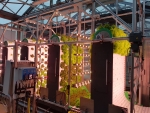
NewFoodSystems: innovation space for tomorrow’s food
A rapidly growing world population and simultaneously rapidly shrinking arable land – these are just some of the major challenges facing the food industry. But how can solutions be found? Answers are being sought by the bioeconomy innovation space NewFoodSystems. Funded by the German Federal Ministry of Education and Research (BMBF), it is a network where science and industry can come together to develop sustainable food systems of the future.
https://www.biooekonomie-bw.de/en/articles/news/newfoodsystems-innovation-space-tomorrows-food